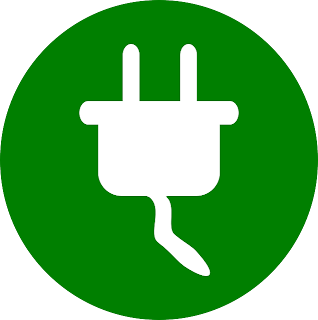A power inverter generator is a device that generates AC electricity with similar output from the outlets of your home. Traditional generators also does the same.
So what makes it different from the traditional generators?
The difference is the technology of the equipment. To explain things better, let's discuss how it exactly operates.
The equipment is actually composed of a generator and an inverter. It's a two-in-one equipment.
When turned ON, the generator works by producing high voltage of "multiphase AC power". This AC power is immediately converted into DC.
The difference is the technology of the equipment. To explain things better, let's discuss how it exactly operates.
The equipment is actually composed of a generator and an inverter. It's a two-in-one equipment.
When turned ON, the generator works by producing high voltage of "multiphase AC power". This AC power is immediately converted into DC.
And from the DC, the inverter is put to action by converting it back into AC power as the final output.
The main purpose of the inverter is actually to smoothen and cleanse the power induced by the generator making it into high quality.
The main purpose of the inverter is actually to smoothen and cleanse the power induced by the generator making it into high quality.
With the help of the equipment's advance microprocessor, the entire process is properly controlled especially when it comes to the speed of the engine.
What is so special about a high quality of electrical power?
When you are using a high quality of electrical power, you will experience stable and consistent power without suffering from "fluctuations".
An electrical fluctuations is an unstable condition of electrical power wherein the power randomly goes up or down. This problem can cause serious damage to any of your electronic equipment.
Through a power inverter generator, the power it produces are filtered making sure that the output generated is perfectly suitable even for the most sensitive electronic equipment that you have.

Upon knowing the benefits of a power inverter generator, you are now probably planning on buying one for your use. But before you do, it is important that you have to choose the right product.
Here are the following "must have" characteristics of a power inverter generator:
1. Suitable High Quality Output
High quality of electrical output has already been discussed above.
2. Small And Lightweight
Most power inverter generators that are available on the market today are now small and lightweight which allows you for easy handling or carrying.
3. Higher Fuel Efficiency
The generator's engine speed is automatically being adjusted by its microprocessor component in which it only produce the right amount of power that is needed by the application that is in use.
4. Quite Operation
Traditional power generators are extremely loud and noisy that it hurts your ear when exposed for some long duration period of time near its area. With the invention of power inverter generator, the engine is a lot much quieter while running at constant full speed.
5. Parallel Connection
If you have two power inverter generators that is of identical models, you can connect them in parallel connection to produce a double power capacity. Such output is comparable to the output of a much larger sized generator.
Overall, a power inverter generator offers you the best protection for any electronic applications around your house.
What is so special about a high quality of electrical power?
When you are using a high quality of electrical power, you will experience stable and consistent power without suffering from "fluctuations".
An electrical fluctuations is an unstable condition of electrical power wherein the power randomly goes up or down. This problem can cause serious damage to any of your electronic equipment.
Through a power inverter generator, the power it produces are filtered making sure that the output generated is perfectly suitable even for the most sensitive electronic equipment that you have.

Characteristic Of A Good Power Inverter Generator
Upon knowing the benefits of a power inverter generator, you are now probably planning on buying one for your use. But before you do, it is important that you have to choose the right product.
Here are the following "must have" characteristics of a power inverter generator:
1. Suitable High Quality Output
High quality of electrical output has already been discussed above.
2. Small And Lightweight
Most power inverter generators that are available on the market today are now small and lightweight which allows you for easy handling or carrying.
3. Higher Fuel Efficiency
The generator's engine speed is automatically being adjusted by its microprocessor component in which it only produce the right amount of power that is needed by the application that is in use.
4. Quite Operation
Traditional power generators are extremely loud and noisy that it hurts your ear when exposed for some long duration period of time near its area. With the invention of power inverter generator, the engine is a lot much quieter while running at constant full speed.
5. Parallel Connection
If you have two power inverter generators that is of identical models, you can connect them in parallel connection to produce a double power capacity. Such output is comparable to the output of a much larger sized generator.
Overall, a power inverter generator offers you the best protection for any electronic applications around your house.














